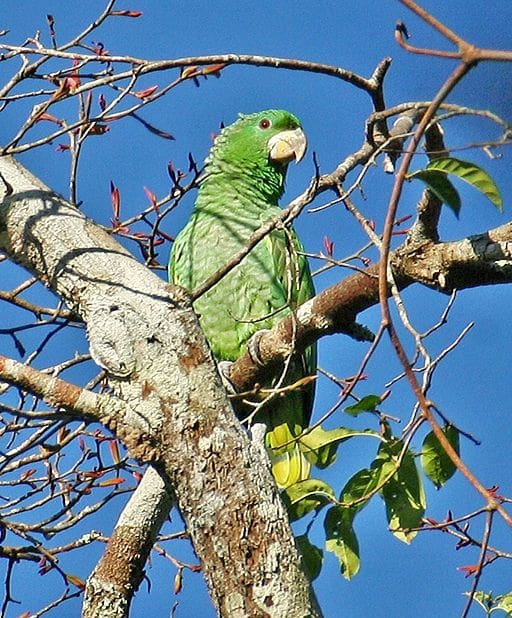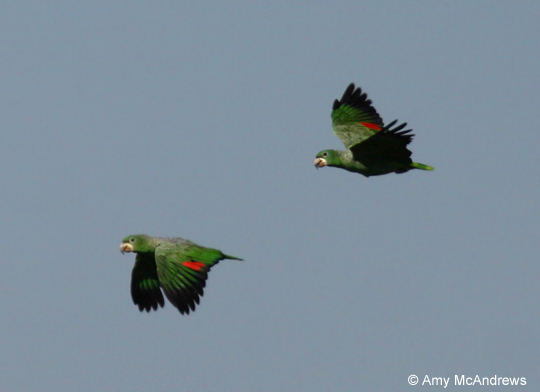White-cheeked Amazon
Also known as:
White-faced Amazon, Kawall's Amazon, White-chinned Amazon
Also known as:
White-faced Amazon, Kawall's Amazon, White-chinned Amazon

Amazona

kawalli
Size:
38 cm (14.8 in)
Weight:
Not recorded.
Subspecies including nominate:
one
Colour Adult:
Both adults in general green; black dusting feathers of crown to upper mantle and sides of neck; secondary feathers 1-3 red at bases, the remainder green; yellow/green carpal edge; tail green with broad yellow/green tip, the side tail feathers red at bases bordered with purple/blue, the outermost feathers margined with blue. Beak horn in colouration with dark grey culmen and tip to upper mandible. Buff/white bare skin at base of beak. Eye ring grey. Eye orange/red.
Colour Juvenile:
As in adults.
More Information:
Content Sources:
CITES
Wikipedia
BirdLife International
Cornell Lab of Ornithology/Birds of the World
Parrots: A Guide to Parrots of the World, Juniper and Parr, 1998
Parrots of the World, Forshaw, 2006. 2010 edition
Lexicon of Parrots, Thomas Arndt.
Parrots in Aviculture, Low, 1992.
Captive Status:
Almost unknown in captivity.
Longevity:
At least 10 yrs.
Housing:
Walk-in flight 3 x 1.5 x 2 m (9.8 x 5 x 6.5 ft), outside minimum temperature 15 C (59 F); metal construction necessary.
Diet:
Seed mix of safflower, oats, buckwheat and some sunflower, fruits and vegetables, green leaves, sprouted beans/peas, rosehips, supplements, complete kibble.
Enrichment:
Bird safe wood chew objects (toys, branches), vegetable tanned leather toys; bathing.
Nest Box Size:
—
Clutch Size:
Not recorded.
Fledging Age:
—
Hatch Weight:
—
Peak Weight:
—
Weaning Weight:
—
World Population:
Unknown, described as uncommon. Decreasing.
IUCN Red List Status:
Least Concern
CITES Listing:
Appendix II
Threat Summary:
The species is feared to be in decline as its forested habitat is lost; moreover, occasional reports of captive birds suggest that it may be susceptible to trapping. Tree cover within its range is being lost at a rate of 9% over three generations. The species is highly forest-dependent, and as such the rate of population decline may be higher than the rate of forest loss alone. The rate of population decline is therefore tentatively 10-19% over three generations.
Range:
Amazon basin in Brazil, north-west.
Habitat:
Found in tropical rainforest; prefers water’s edge and permanently flooded forest.
Wild Diet:
Seed, palm fruits.
Ecology and Behaviour:
Nests in cavities of trees in flooded areas.
Clutch and Egg Size:
Not recorded.
Breeding Season:
Not recorded.


![© Jacek Kisielewski [CC BY-SA 3.0] via Wikimedia Commons](https://parrots.org/wp-content/uploads/2023/01/wpt_White-cheeked-Amazon_1125-3-100x100.jpg)
